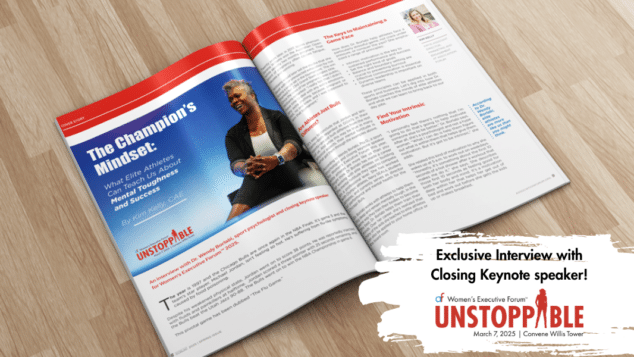Hiring Tips for Associations Navigating Today’s Talent Market

A few stunning statistics sum up just what a topsy-turvy effect COVID-19 has had on the job market: Hiring surged in July, while the unemployment rate hovered around 5%. At the same time, nearly 95% of workers in a Monster.com survey said they were considering quitting their jobs. Their top reasons were burnout (32%) and lack of growth opportunities at their current job (29%).
The pandemic has caused many people to reevaluate their lives, including how and where they work. In fact, about 1 in 4 workers will likely leave their jobs this year, according to Prudential’s Pulse of the American Worker survey. The competition for top talent is tighter than ever, which means that organizations need to get smarter about hiring.
For associations, that can mean focusing on getting their name out to prospective hires and solidifying their reputation, says Abby White, founder and CEO of HR consulting firm, Gro HR Consulting. “Set yourself apart by being the best at what you do — in all the ways you do it,” she says.
Here are six ways associations can stand out in today’s tight job market.
1. Promote Hybrid and Remote Options
“Working remotely has impacted so many people, and a return to the office is no longer attractive,” says Steven Farrahi, regional director of recruiting for Goodwin Recruiting. Nearly two-thirds of job seekers say they’ll give preference to employers who offer remote options, according to a 2021 LiveCareer survey.
That doesn’t necessarily mean you have to offer a full-time remote option. Many companies are considering a hybrid approach and 52% of American employees prefer a hybrid remote/in-office work schedule, per Gensler’s Global Workplace Study. But be prepared that the more days each week your association requires employees to be in the office, the smaller your candidate pool may be.
2. Flex Any Flexible
Along with the option for remote work, employees generally want more flexibility in their work/life schedule these days. In fact, 88% of workers say that when searching for a new position, they would look for a company that offers complete flexibility in work hours and location, according to Citrix’s Talent Accelerator report. That might include a four-day workweek or the chance to work longer on some days and shorter on others, Farrahi says. “The pandemic has shown the benefits of being with family,” Farrahi says. As candidates look to their next career opportunity, they may be eager to hold onto the flexibility that makes that family time possible.
Workplace flexibility might especially be attractive to the 2 million women who have stopped looking for employment since the pandemic began primarily because of disruptions in schooling and child care, according to an AP article. Is your association able to offer job-sharing or split shifts? Does the association have part-time or seasonal positions? Is there a sabbatical program? Or flex scheduling? All of those could be differentiators that should be called out in job ads and promotions to attract the best talent possible.
3. Be Salary Transparent
Associations sometimes struggle to offer competitive salaries compared to larger companies — and that’s OK. But leaving that information out of the job ad only sets candidates up for disappointment later in the process, Farrahi says. What’s worse: Being vague about compensation could mean some qualified candidates discount the opening, even when the salary might be right in line with their requirements.
Rather than evade this question, embrace transparency, Farrahi suggests. Being upfront and sharing a specific salary range just might net you more candidates in the long run. According to the Society of Human Resource Management, compensation and benefits are the top two things people look for when they read a job posting.
4. Beef Up Benefits
A paycheck is hardly the only way to woo talent. Even if the association has a limited budget for salaries, consider other perks that you can either add or promote during the candidate search. Generous paid time off is a start, but what about unlimited vacation? That’s an increasingly popular policy that may set you apart from other organizations — regardless of the paycheck.
Similarly, think through other perks that might catch a candidate’s attention, such as mentorship programs, parental leave policies, volunteer opportunities and even novel team-building events. With the pandemic, offerings like disability, life insurance and sick leave have also become more important than ever. “Offer a diversity of options with a clear mission — to take care of your employees now and for as long as they are with you,” White says.
5. Review Your Online Presence
Before a candidate fills out a job application, they’ll do a little sleuthing first. They’ll visit the association’s website and social media accounts and look for any reviews from current or former employees on sites like Glassdoor.com. What they see there could help them decide whether they want to work for you or not.
Think of the association’s online presence not just as a means of connecting with members but as a connection to potential candidates, White says. Make sure current openings are posted on your site, and make it easy to apply there. Don’t be shy about spotlighting your current employees and team events to give a glimpse at what it’s like to work for the organization. Two of the top types of content that employees want answered in your marketing content are information on your culture and why people want to work for you, the Talent Accelerator report found. Video employee testimonials or video job postings can also be very attractive to potential hires.
6. Stretch Beyond the Comfort Zone
Whether you handle hiring in-house or rely on outside recruiters, it’s worthwhile to regularly review your recruitment process and assess whether it’s future-proof. Texting, for instance, once felt bleeding-edge in the recruitment space, but it’s increasingly inching mainstream. From 2019 to 2020, the number of candidates reporting a positive job hunt experience increased by 32% when they could launch a job application directly from a text message and 35% when they received text message reminders about the next steps in the hiring process.
Likewise, a formal employee referral program might have seemed like a nice-to-have even a few years ago. But in today’s tighter labor market, it might move the needle on how quickly the association fills open roles — and retains quality hires. Job board posts generate more job candidates, but companies with employee referral programs have a 46% retention rate compared to 33% for those that don’t, according to HR Technologist.
No matter how your association navigates today’s talent market, it’s imperative to remember that every interaction reflects back on your brand, says Farrahi. That means gone are the days of approaching application stacks like a giant slush pile and not responding to candidates who give ho-hum interviews. “Building a reputation that shows your association has a high level of integrity can be just as important as earning a paycheck for some employees,” says Farrahi. Build — and protect — a brand that top talent will flock to by treating every potential hire with respect.
Tags
Related Articles
Refill Your Cup: Summer Wellness Tips for Busy Professionals
Discover simple, effective ways to recharge this summer so you can show up as your...
The Champion’s Mindset: What Elite Athletes Can Teach Us About Mental Toughness and Success
An interview with Dr. Wendy Borlabi, sport psychologist and closing keynote speaker for Women’s Executive...
Great Bosses, Greater Impact: Leadership Lessons that Stick
The best bosses leave more than instructions—they leave echoes of confidence, creativity, and leadership that...




